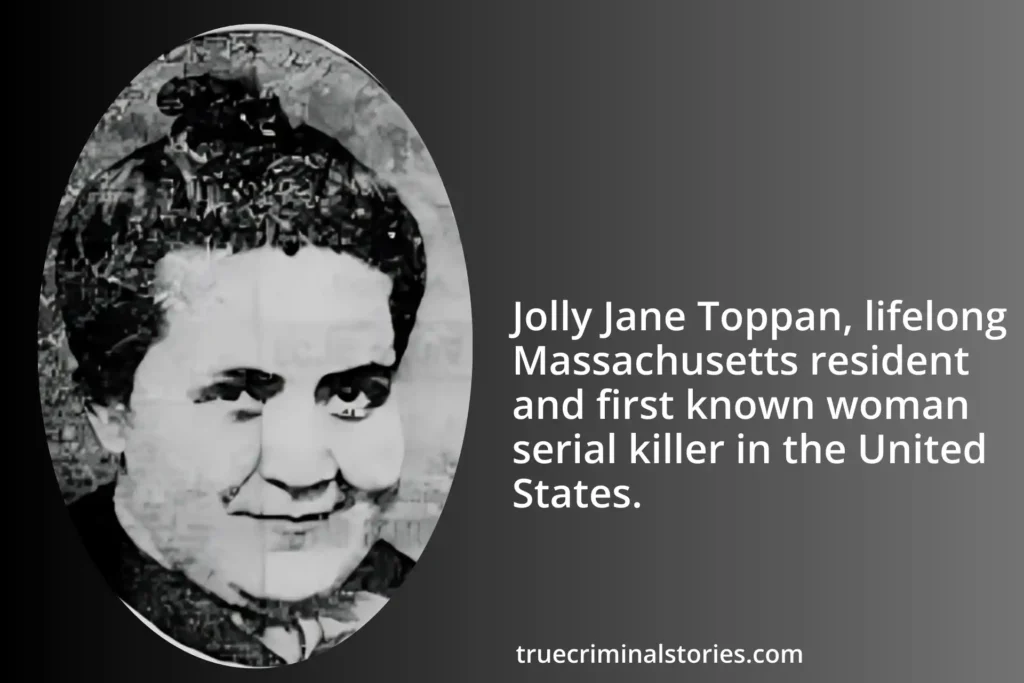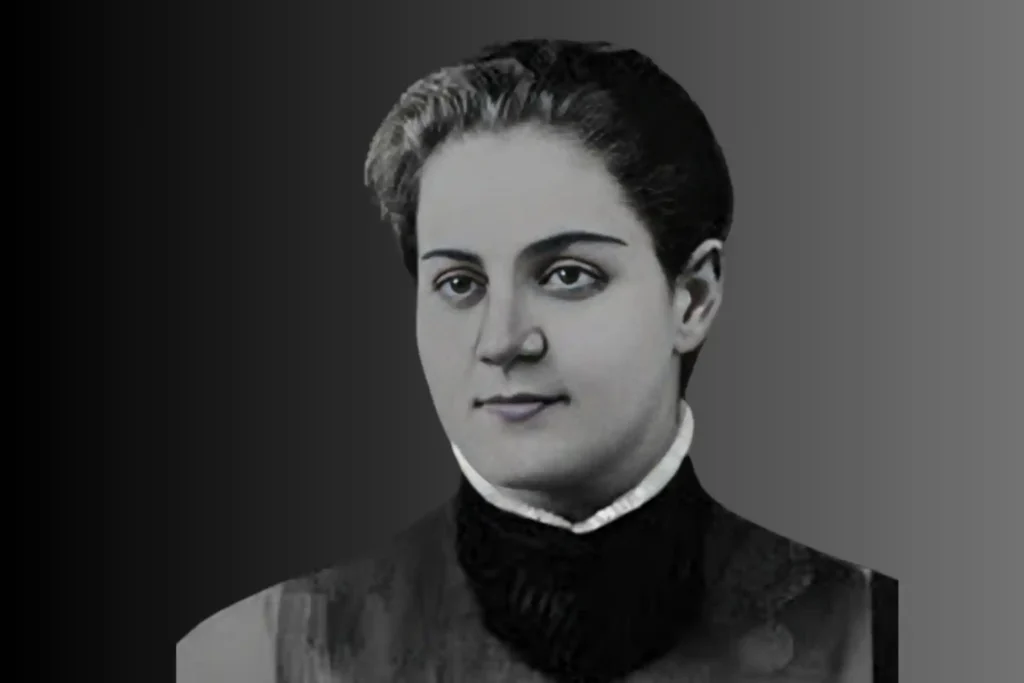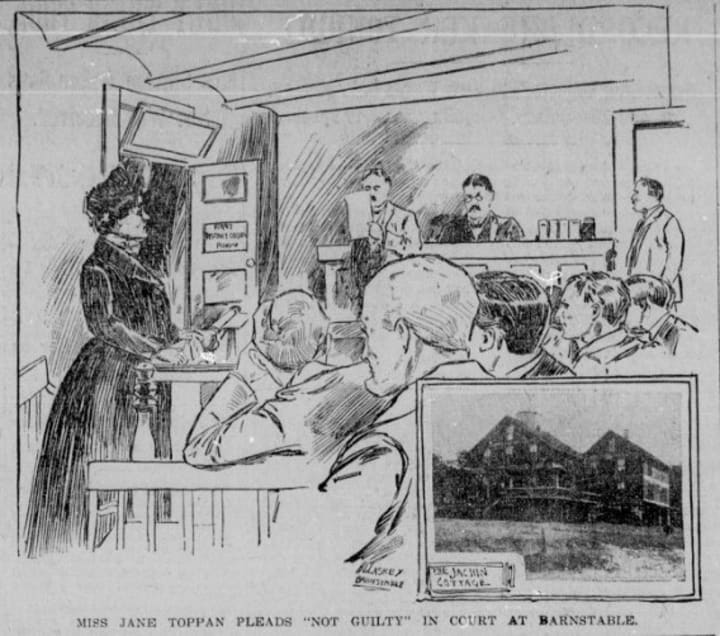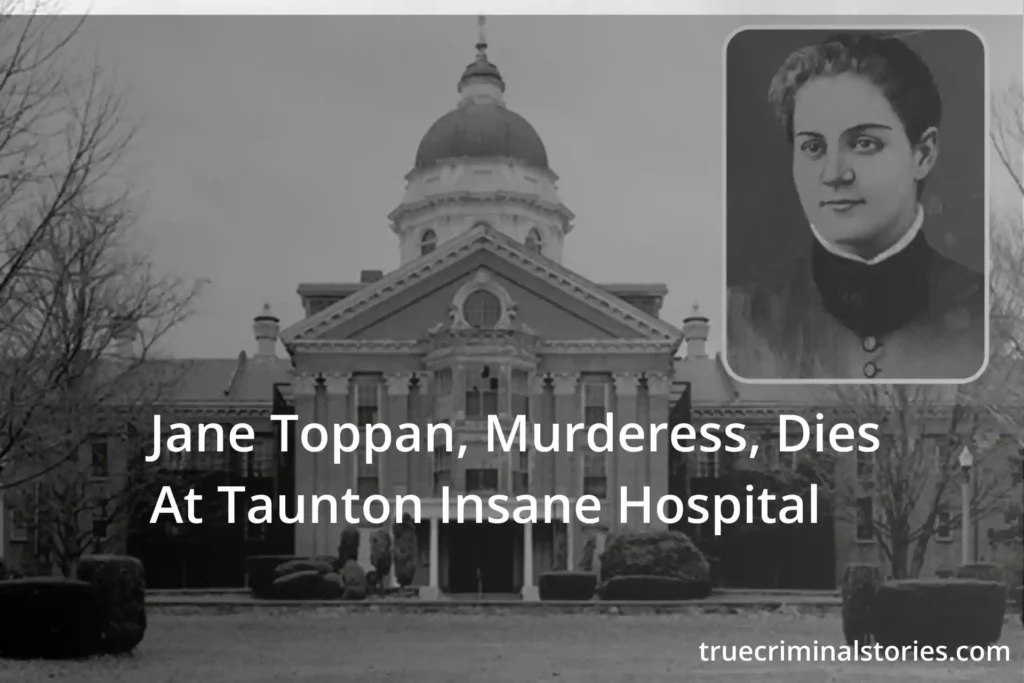Jane Toppan, also known as “Jolly Jane,” was one of the most notorious serial killers in America. The public was startled by her murders in the late 19th century, and her story serves as a terrifying reminder of how a supposedly caring nurse turned into a cruel killer. From Jane Toppan’s terrible childhood to her gruesome murders and final capture, let’s take a close look at her life.
Table of Contents
Who was Jane Toppan?
Jane Toppan rose to fame as one of the most notorious serial killers in America, gaining the nickname “Jolly Jane.” Despite having a difficult and abandoned childhood, she eventually earned a reputation as a trusty nurse. But beyond her upbeat exterior, Jane had a darker side.

She started giving patients deadly amounts of morphine and atropine as part of her experiments, using her medical expertise to enjoy the power of life and death over her victims. Her crimes, which spanned over a decade, shocked the nation, and she became one of the most famous female killers in history.
Early Life and Troubled Childhood
Born Honora Kelley in Boston, Massachusetts, on March 31, 1854, Jane Toppan had an extremely challenging start. Jane and her siblings were left in the custody of their alcoholic father, Peter Kelley when their mother passed away from tuberculosis. He was known for acting abusively and erratically; at one time, he even allegedly sewn his eyelids shut. Because of his erratic actions, he was known as “Kelley the Crack.”
Peter Kelley abandoned Jane and her sister in the Boston Female Asylum, an orphanage for young girls. Jane’s life took a dramatic shift at that point. When she was eight years old, Honora was employed by Mrs. Ann C. Toppan of Lowell, Massachusetts, as an indentured servant. In order to disconnect herself from her former family, Honora adopted the surname of her benefactors, even though the Toppans never formally adopted her. Eventually, she became known as Jane Toppan.
Adolescence and Early Adulthood
Despite having a difficult childhood, Jane Toppan appeared to lead a very normal life with the Toppans. The family treated her well, which she never felt before. While Jane did eventually gain her freedom, she continued to live with them even after the Toppans had no legal claim over her.
As a young adult, Jane put a lot of effort into fitting in, and her cheerful personality led to her being known as “Jolly Jane.” But beneath this façade, darker impulses were brewing.

Becoming a Nurse: The Start of Jane the Killer
In 1885, Jane Toppan began her nursing training at Cambridge Hospital, and this is where her dangerous behavior began. Instead of helping her patients, she utilized her position to test deadly chemicals. Jane gave lethal amounts of morphine and atropine, watching as they hovered between life and death. But she also spent a lot of time alone with patients, creating fake charts, medicating them to drift in and out of consciousness, and even sharing a bed with them. It was later revealed that she found an unsettling pleasure in being present as her victims died.
In 1889, Toppan was recommended to work at the prestigious Massachusetts General Hospital, where she claimed many further victims before being fired the following year. She briefly returned to Cambridge, but she was quickly fired for carelessly giving opiates. Toppan then started working as a private nurse and flourished despite complaints of petty theft.
In 1895, Toppan killed her landlord, Israel Dunham, and his wife, marking the start of her poisoning spree. in 1899, She used strychnine to kill her foster sister, Elizabeth. In 1901, Toppan moved in with the elderly Alden Davis and his family in Cataumet to take care of him after the death of his wife Mattie (whom Toppan had murdered). In just a couple of weeks, she murdered Davis, his sister Edna, and his two kids, Genevieve and Minnie.
Like Judy Buenoano, known as the Black Widow Killer, Jane Toppan exploited her position of trust to commit her crimes.
Jane Toppan’s Victims
The victims identified by Jane Toppan include several individuals spanning over a decade. Here are some of them:
- Israel Dunham: patient, died on May 26, 1895, aged 83
- Lovely Dunham: patient, died on September 19, 1897, aged 87
- Elizabeth Brigham: foster sister, died on August 29, 1899, aged 70
- Mary McNear: patient, died on December 29, 1899, aged 70
- Florence Calkins: housekeeper for Elizabeth, died on January 15, 1900, aged 45
- William Ingraham: patient, died on January 27, 1900, aged 70
- Sarah (Myra) Connors: patient and friend, died on February 11, 1900, aged 48
- Edna Bannister: sister-in-law of Elizabeth, died on June 19, 1901, aged 77
- Mattie Davis: Wife of Alden Davis, died on July 4, 1901, aged 62
- Genevieve Gordon (Annie): daughter of Alden and Mattie Davis, died on July 30, 1901
- Alden Davis: died on August 8, 1901, aged 64
- Mary (Minnie) Gibbs: daughter of Alden and Mattie, died on August 13, 1901, aged 40
Nannie Doss, the infamous ‘Giggling Granny,’ is recognized as one of the most notorious female serial killers, leaving a long history of victims spanning decades. Read more about her chilling legacy.
The Capture of Jolly Jane
For an extended period, Jane Toppan managed to avoid suspicion despite her multiple murders. But after the Davis family’s suspicious deaths, her crimes finally caught up with her.
The remaining members of the Davis family ordered a toxicology test on Minnie, which revealed that she had been poisoned. A police detail was assigned by the local authorities to keep an eye on Toppan. She was taken into custody for murder on October 29, 1901.

Toppan later claimed that her goal was to “have killed more people—helpless people—than any other man or woman who ever lived.”
Jane startled the country when she confessed to murdering at least 31 people during her trial. The public was even more shocked when she publicly acknowledged that she enjoyed the process of seeing her victims die. She was declared to the Taunton Insane Hospital in Massachusetts in 1902 when it proved that she was legally insane, where she remained for the rest of her life. She died there on August 17, 1938, at the age of 84.

The unresolved murder of JonBenet Ramsey continues to haunt the nation, stirring the same level of shock and mystery as Jane Toppan’s calculated killings did in the late 19th century.
Psychological Profile of Jane Toppan
Jane Toppan exhibited sadistic and antisocial personality disorder features, a terrible joy in managing life and death, and an absolute lack of empathy. Her urge for control over her victims was likely fueled by her early trauma, which was characterized by rejection and abandonment. Her narcissistic traits also fueled her drive for power and her sense of superiority. Jane, who had been diagnosed as legally insane, lacked morality and showed no remorse for her acts. She became one of the most infamous serial killers in American history as a result of these factors.
Legacy of Massachusetts Serial Killer
Jane Toppan, or “Jolly Jane, continues to be considered one of the most notorious serial killers in American history. She was a distinctive and dangerous figure because of her ability to fit in with society and utilize her role as a trusted nurse to carry out her crimes. Her story serves as a warning about the dangers that can lie beneath even the most trustworthy people. She was one of the most notorious female serial killers. She reportedly lived out the rest of her life without feeling guilty about what she had done, spending her last years in confinement.
Although Toppan’s case was solved, many other famous criminal mysteries remain unsolved.
Conclusion
Jane Toppan’s life is a terrifying story of deception, manipulation, and murder, starting with a difficult upbringing and ending with her career as a sadistic nurse. Known as “Jolly Jane” and “Jane the Killer,” she killed dozens of innocent people by using her position of trust. She remains one of the most notorious serial killers in Massachusetts and American history, not only because of the large number of her victims but also because of the twisted pleasure she gains from taking their lives.
FAQs
How did Jane Toppan’s case impact public perception of nurses?
Jane Toppan’s case startled the public and prompted worries about the unrestricted authority nurses could have over vulnerable patients. Her murders sparked heightened scrutiny in the medical field and highlighted the possibility of abuse in caregiving roles.
What tactics did Jane Toppan use to avoid suspicion?
Jane Toppan often blended into her position as a caregiver, using her medical skills to deliver lethal amounts of medication while appearing to be a devoted nurse. Her pleasant personality and ability to captivate everyone around her helped her avoid suspicion for a long time.
How did the media portray Jane Toppan during her trial?
During her trial, Jane Toppan was defined as both a monster and a tragic character. The media sensationalized her story, highlighting her nursing career and pleasant manner, which stood in stark contrast to her illegal behavior.